
At the time, he was working on an album and a film. It was reasonable to assume that these projects would be released in due time, in whatever salvagable state that they could be. But that never happened. Neither of these projects would be released. No tributes, no retrospectives. Nothing more of consequence. Until now. Dark Blood provides a sort of closure for those fans of 20 years ago.
As an actor, it was assumed by many that River would have a substantial and successful career for as long as he wanted it. In the span of just eight years he worked with the likes of Harrison Ford, Sidney Poitier, Robert Redford, Helen Mirren, Richard Harris, Sam Shepard, Rob Reiner, Sidney Lumet, Gus Van Sant and Steven Spielberg.
At the age of eighteen he received an Academy Award nomination for his performance in Running on Empty, and three years later was praised for what was at the time a rather risky portrayal of a narcoleptic street hustler in My Own Private Idaho.
In addition to being an actor and musician he was a dedicated animal rights activist living a strict vegan lifestyle. He was also a committed environmentalist and human rights advocate. In October of 1992, his band performed at a Clinton/Gore campaign stop in Gainesville, Florida.
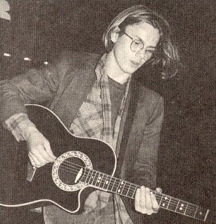
We lost more than a talented actor and musician when he passed away. We lost a likely leader in the progressive movement. Where he would be today cannot be known of course. But it's safe to assume that had he made it past that experimental stage that so many of us go through at a certain age, he would have been an influential and positive force in the world.
The Film
So now Dark Blood has been completed. Director George Sluizer has pieced together the existing footage to form a coherent narrative. As a result, River is re-emerging in the public consciousness to a degree. And with that comes a measure of sometimes callous prattle.
There is a lot of controversy surrounding the filming of Dark Blood, which was shot on location over six weeks in Torrey, Utah under rather challenging circumstances. Other people can concern themselves with the behind the scenes politics. It will not be focused on here. Whatever the details, they've been sensationalized and to dwell on them is pointless.
There have been comments from some about his appearance in this film. Believing he looks 'too thin,' which must be the result of drug abuse. In reality he had been clean for the entirety of location shooting. Furthermore, the script actually calls for his character to be "skinny," living off nothing but occasional rats and snakes in the hot desert.
Many people have looked at Dark Blood through a prism of two decades of media drama over a tragic accident. It's time to look at the glass as half full with this film. People who concern themselves with the final moments of his life do so more out of an unrecognized morbid curiosity than a respect for his work and activism.
When watching this film for the first time it is important to keep one thing in mind:
It shouldn't exist. The production shut down with only 80% of the film completed. The footage was locked away until 1999 when the insurance company decided to burn the film to make space in their warehouse. The details are sketchy, but with only 48 hours notice George Sluizer arranged for the film to be 'secured' and shipped to the Netherlands where it sat until 2012 when the director began editing the film.
With the help of an international crowd funding effort, Dark Blood was finally realized and shown for the first time at the Dutch Film Festival on September 27th, 2012. To solve the problem faced by the 20% that wasn't filmed, the director used his own voice narration over still pictures to fill in the missing pieces. The result is very effective.
Dark Blood is a beautiful film. Considering when it was made and that we are now spoiled by the digital age, the cinematography by Ed Lachman is nothing short of stunning. While it may be a small film it has an epic scope. Between the themes and the visuals it has a timeless feel and looks as though it could have been filmed yesterday.
The landscapes are breathtaking. The Shack where Boy lives has so much character itself against the stark desert landscape it calls to mind a hovel on a desolate alien planet, not unlike Luke Skywalker's home on Tatooine.
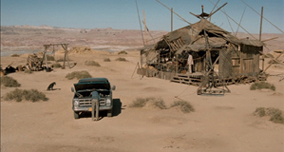
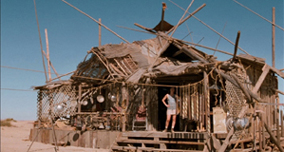
The acting by all three principles is excellent. River's character, while that of the antagonist this time around, is also rather sympathetic. There are moments where he clearly is having some fun with the role, at times playing up the awkwardness of the character and there is a quirkiness to his performance that is entertaining to watch.
The story is about a Hollywood actor named Harry, played by Jonathan Pryce and his wife Buffy, played by Judy Davis traveling through the desert on a second honeymoon in the hopes of rejuvinating their relationship. When their Bentley breaks down they are rescued by a lonely widower named Boy (River) living near a nuclear testing site. His only company is his dog. A flirtation develops between Boy and the wife as he becomes increasingly possessive of her, to rather unfortunate ends.
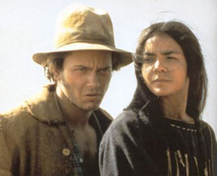
What's Missing?
This film was designed as a sexual thriller. And it does succeed as such on a peripheral level. But while it is 80% completed, that remaining 20% contained about 80% of the sexuality. It is still engaging and it flows smoothly even if on a slightly more 'innocent' level for the characters.
The director does a good job of narrating the missing scenes, which somehow manages to even improve the tone of the film. But that does not mean that the director has bridged all the gaps. Being familiar with the script I was a little surprised at Sluizer's decision to not tell the audience certain things about missing parts of the story. Important scenes were not mentioned at all.
For example, the first kiss between Buffy and Boy in the Shelter is not telegraphed in any way. While still high on the 'indian drug' shortly after he says "I'm just another creature," they kiss. She then asks "This stuff makes you horny, right?" "It does" he says. She then pulls away and says "Is that why you gave it to me?" Just then Harry pops back into the room. The film still works without the kiss being mentioned, but it's a significant omission.
There are a number of sex scenes that were not relayed by the narration, including a scene between Buffy and Harry in the motel room that starts with a game of strip poker, then escalates to sex, showing Harry oblivious to her needs while she lays there detached and distant, and finally ending with an argument between the two, with Harry leaving to smoke a cigarette and check on the Bentley.
Another rather intense evening scene was to show Boy watching Buffy and Harry from his bedroom while they are having sex on the floor in their makeshift bed. Buffy notices Boy watching them, but does nothing except look back in his eyes as he masturbates. A sort of voyeuristic/exhibitionist 'menage' with the husband completely oblivious.
In the finished cut of the film, you don't get the sense that she is leading him on quite as much. In the script, she is the catalyst for his increasingly worrisome behavior. The teasing sex-play that she is used to with other men gets her (and Harry) in trouble this time around. That's what she means later when she says "I make such a mess of things."
Some scenes that I assumed would have been filmed never were. All location shooting was completed in Utah before the production moved back to LA for the remainder of studio shooting. The Shack was built on location as an exterior/interior set. Some interiors were filmed in Utah but others were put off for soundstage shooting on a rebuilt Shack interior.
While never filmed, there are quite a few clues to some missing scenes in the surviving footage if one knows where to look. For instance, when Buffy is first inside the Shack, she notices a photo of Boy's Hopi great-grandfather. While whittling, he explains that "Abner" died of melancholia in a mental institution, which makes Boy "one eighth Hopi and prone to depression."
Later when Harry is first in the Shack, he notices a small shrine with a photo of Boy's wife dressed in a nurse's uniform. He reaches for the photo and Boy yells "Don't touch that!" Neither of these scenes were filmed but you can see the framed photographs in the background of a few existing shots.

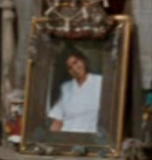

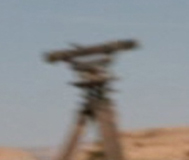

The Kachina doll is also more of a character in the script. Boy has carved an army of these dolls but the one 'star of the show' is the Sunface Kachina, which traditionally represents 'warmth, shelter for the old, a bright future, and playfulness for the young.' In the script it starts out as a block of wood and you see the evolution of the doll as it is being carved.
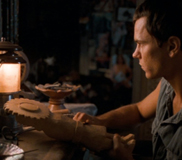

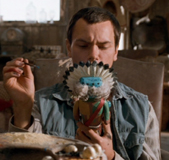

There are a few other scenes that weren't filmed or narrated but the last one I'll mention was supposed to open the movie. The intention was for Boy to be seen in his Shelter, sitting crosslegged on an old Persian rug. He's playing a small Native American drum when he hears a dog howling outside. He stops, goes to the cave opening and howls back at the dog. In the finished cut, a fragment of this scene has been salvaged. If you look closely you'll see stock footage used for the dog, who is clearly not his black-haired companion. It might not be perfect but it works and is a welcome inclusion.
I think the director deserves credit for the strategic editing of another scene. He didn't have to do this but all references to the word 'peyote' have been removed from the finished cut of the film. There is a scene in the script where River's character meets an older Native American man (who appears again at the end of the film) working in a garage to tell him about the couples broken down Bentley. During the exchange he receives a small package, and later it is revealed that in the package was peyote - which is then indulged in by Boy and Buffy (Harry declines and opts for moonshine).
In his narration of one of the unfilmed scenes, Sluizer calls the 'indian drug' moonshine (which is a little confusing). You do not see the peyote transaction in the finished film, but if you look closely you can see River's character holding it in his left hand as he walks away from the garage and into his truck. For an uncompleted film, where every frame of footage is valuable, the fact that the director was sensitive to the drug references enough to make a slightly noticeable edit to his film should be acknowledged.
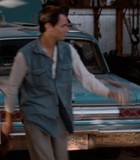
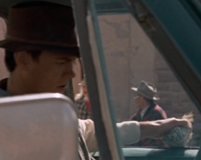
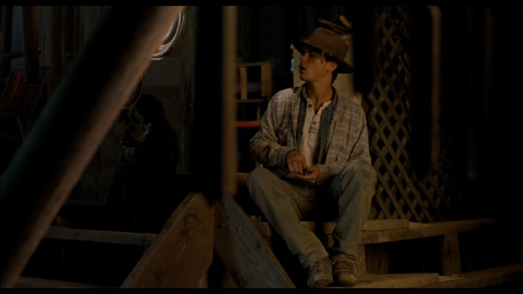
As of this writing Dark Blood has not secured theatrical distribution rights, although it is screening at select film festivals, including the Berlin International Film Festival in February
and the Miami International Film Festival in March.